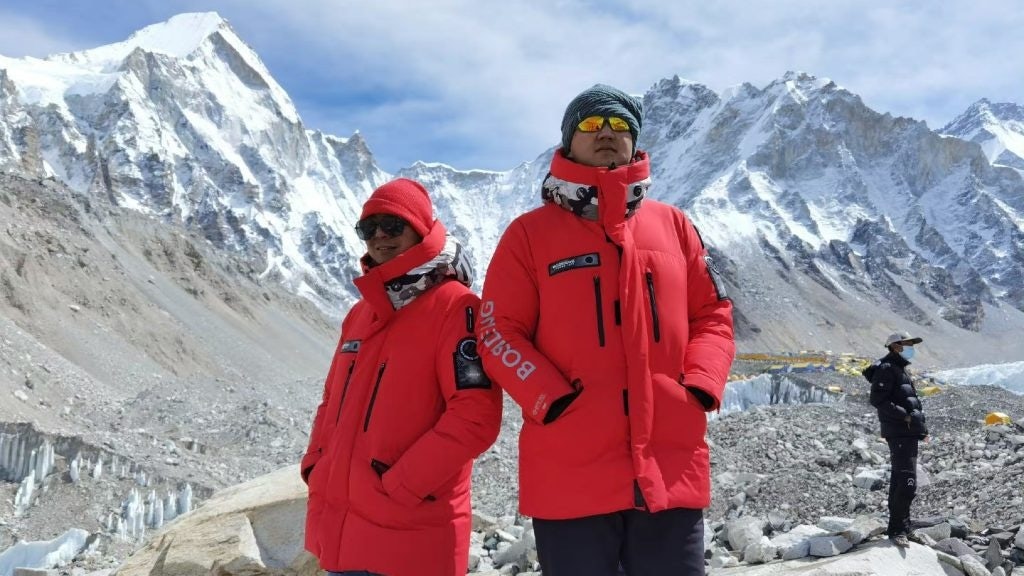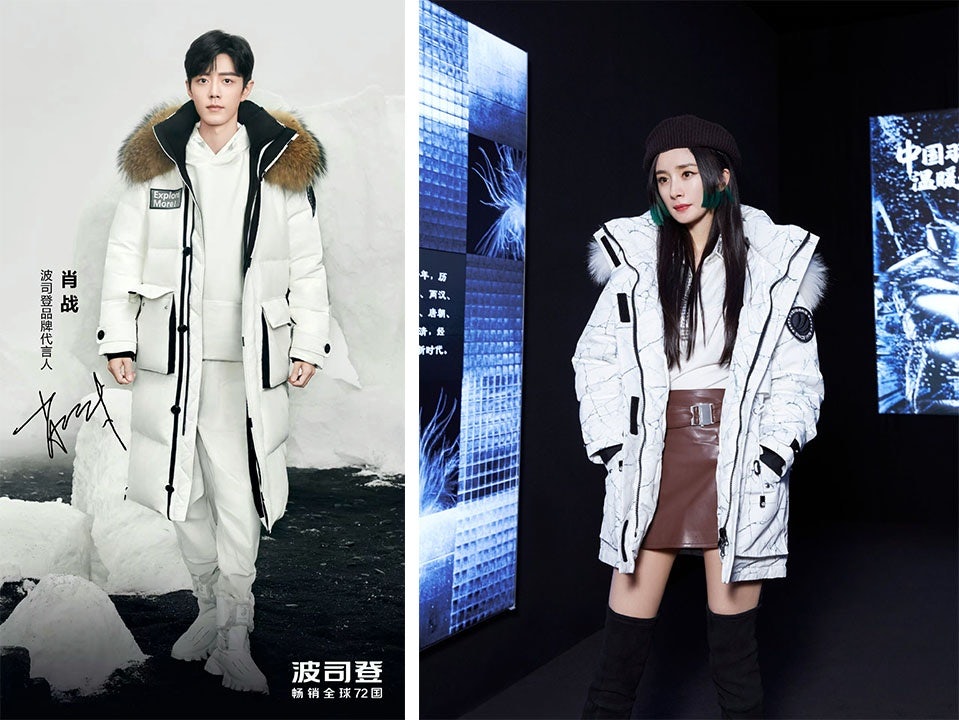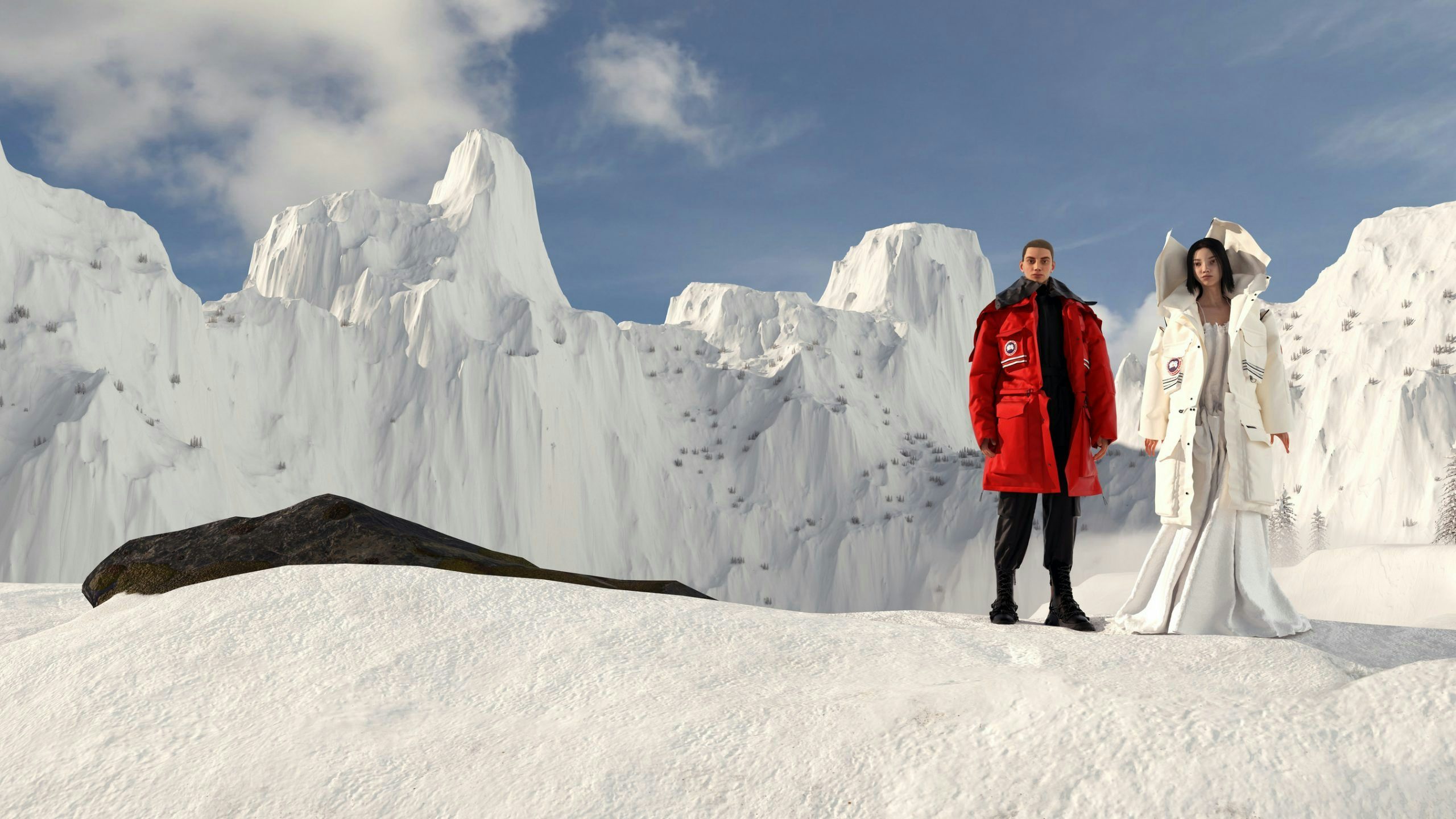Key Takeaways:#
- Bosideng has been creeping into the high-end market by gradually raising prices, collaborating with international designers and IP, and releasing pricey high-tech collections.
- But despite these efforts to bolster global prestige, it has been difficult for Bosideng to shake its image as a mass-market brand. CBNData found that of the top 10 products sold in Bosideng’s Tmall store from January to October 2021, none were priced over 1,000 RMB.
- The Dengfeng 2.0 series saw more than 100 sales of products priced above 10,000 RMB (1,566) on Tmall within a week of its release in November 2021, signaling that Chinese consumers may be slowly warming to the idea of a premium Bosideng.
From dressing Chinese mountaineering teams as they scale Mount Everest to sponsoring the Chinese Antarctic expeditions, Bosideng is not afraid to explore new extremes.

Now, it’s taking this climb more figuratively. On November 26, the Chinese winter apparel giant announced plans to hike prices to more than 2,000 RMB (314) over the next three years, up from its current average price of 1,700 RMB (266). This comes a day after the release of Dengfeng 2.0, its second series of high-tech down jackets, which retails for as much as 14,900 RMB (roughly 2,300).
Bosideng’s trek toward the high-end market signals a turnaround from just a few years ago, when the group was struggling to keep green. For the fiscal year ended March 2016, the company reported that revenue slumped 8 percent to 5.787 billion RMB (895 million), marking a fourth consecutive year of revenue decline. That year, Bosideng’s stock price reportedly fell to as low as 0.14 Hong Kong dollars, and in 2017 nearly 9,000 domestic stores were shuttered.
But it weathered the storm. After strategic calls to focus on its down jacket business (rather than four seasons) and strengthen branding, Bosideng managed to pull back from the brink of death. According to its latest interim report, company revenue surged an impressive 15.6 percent to 5.39 billion in the six months ended September 2021 — almost what it made the entirety of the 2015/16 fiscal year. On top of this, the Bosideng brand was recently named No.1 in global down jacket sales, according to Euromonitor International.
As these numbers show, Bosideng dominates the mid-end market in China. So then, why is it creeping into high-end territory and putting itself in more direct competition with luxury houses? And will Chinese consumers embrace another round of transformation?
Bosideng’s path to premium prices#
Before brands position themselves as high-end, they must first communicate on quality and expertise, explained Juliette Duveau, co-founder of consulting agency The Chinese Pulse.
And that’s exactly what Bosideng did. Besides doubling down on down jackets, the Shanghai-based brand began bolstering the quality of its products by investing in Ramp;D, accumulating 311 patents to date. Dengfeng 2.0, for example, is designed to withstand the harshest conditions and comes equipped with China’s BeiDou navigation system, 5G communication services, four-layer temperature control and thermal insulation technology, contributing to the brand’s sense of professionalism and purpose.
“A bit like sportswear brand Li-Ning, Bosideng is recognized as a ‘China cool brand with a sense of mission’ inside consumers’ minds,” Duveau said.
On that note, brands also need to be cool and trendy to charge a premium, Duveau continued, particularly as outdoor brands like The North Face raise the bar on urban fashion. That’s why Bosideng reinvigorated its style by collaborating with renowned designers, including former Ralph Lauren design director Tim Coppens and former Hermès brand art director Jean Paul Gaultier, as well as international IP such as Disney. Moreover, it debuted at global fashion shows and partnered with Chinese A-listers like Yang Mi and Xiao Zhan to further grow brand awareness.

With this restructuring underway, Bosideng started to gradually raise its prices. In 2018, the brand’s prices jumped as much as 30-40 percent, up from the average price of 1,100 RMB in 2017. By 2020, this figure had reached roughly 1,700 RMB, with the sales of goods priced 1,800 RMB and above accounting for almost one-third of total revenue.
High-end versus high-priced#
However, selling expensive items doesn’t automatically make a brand high-end. Despite Bosideng’s efforts to buff up its prestige through global partnerships and price increases, its communication strategy has not evolved to explain this change of positioning, said Doris Wu and Jingyi Xu, consultants at Cherry Blossoms Intercultural Branding.
The two pointed to the “Dengfeng” series as an example: “The product functionality is the only element emphasized as a communication driver,” Wu and Xu wrote to Jing Daily. “Even though the brand’s communication is consistent by representing only the national mountaineering team in its visuals, the communication strategy is far from luxury communication codes.”

And without proper consumer education, it will be difficult for the 45-year-old brand to suddenly shake its mass-market reputation. “[Bosideng’s] past image has been shaped by affordable products (a hundred-yuan range), off-season super discounts, ‘mediocre’ designs, and numerous authorized outlets in Tier 3 and Tier 4 cities,” they said.
On top of these obstacles, Duveau added that because the majority of Bosideng’s core consumers reside in lower-tier cities, hiking prices may cause it to lose its existing clientele. In fact, when Bosideng initially released the Dengfeng collection in 2019, which ranged from 5,800 RMB to 11,800 RMB, the drop became a hot topic on Weibo as netizens complained that the products were “beyond the reach of ordinary people.”
Meanwhile, CBNData found that of the top 10 products sold in Bosideng’s Tmall store from January to October 2021, none were priced over 1,000 RMB. In contrast, Canada Goose’s top 10 items on Tmall averaged 8,160 RMB (1,280), firmly embedded in the high-end market.
More than just the money#
Given these challenges, why raise prices? The most obvious reason is money. By zeroing in on its down jacket business and high-end strategy, the group (which also houses the down jacket brands Snow Flying and Bengen) was able to boost gross profit margin by 2.7 percentage points to 50.5 percent in the first half of 2021. And according to Duveau, having enough profits will not only help the company face potential increasing costs of labor and raw materials, but also drive more marketing and CSR efforts.
Beyond this, price hikes can also help the down jacket maker target the rising number of Chinese urban middle-class consumers who are less price-sensitive and more focused on quality and design, which will benefit the brand’s exclusivity in the long-term, Wu and Xu said. Plus, as their appetite for homegrown apparel grows, Bosideng would be able to position itself as a local option in the premium down jacket market — currently dominated by Western luxury houses Moncler and Canada Goose.
But will Chinese consumers keep buying?#
Although Dengfeng 1.0 was met with some backlash, local consumers seem to be slowly warming to the idea of a more exclusive Bosideng. As of December 1, Dengfeng 2.0 saw more than 100 sales of products above 10,000 RMB (1,566) on Tmall, a noteworthy change from the mere three down jackets it sold at that price point in the first week of the Dengfeng 1.0 release.
That said, the Chinese brand has a long way to go — both in terms of raising prices and brand storytelling — before it can replace Western winter wear titans. The Cherry Blossom consultants note that while “the rise of national pride and fading aura of the West leave room for global Chinese luxury brands to emerge,” no local brand thus far has been able to reach the level of fame as Western luxury.
Ultimately, becoming a luxury brand involves more than tacking on extra zeros to price tags. To climb to greater heights, Bosideng will need to shed its mass-market image and show consumers that its products are more than just functional — they are aspirational.


